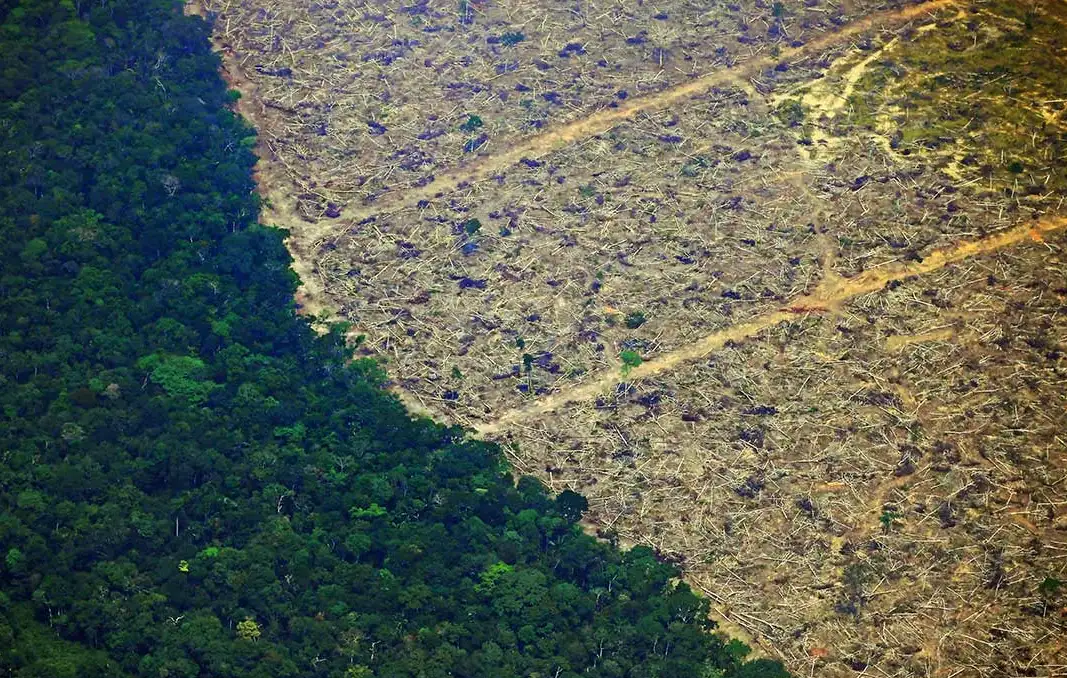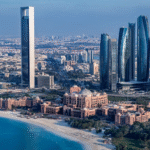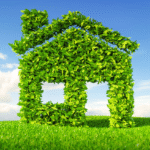Now Reading: UAE Real Estate: 6 Powerful Reasons to Invest in 2025 Villas
-
01
UAE Real Estate: 6 Powerful Reasons to Invest in 2025 Villas
UAE Real Estate: 6 Powerful Reasons to Invest in 2025 Villas

Table of Contents
The UAE real estate market, valued at AED 893 billion ($243.1 billion) with 331,300 transactions in 2024, is a global investment hub, projecting 5-8% price growth and 5-11% rental yields in 2025, per skylineholding.com.
Villas, particularly in Dubai, Abu Dhabi, and the Northern Emirates, are gaining traction due to high demand from high-net-worth individuals (HNWIs), families, and expatriates, driven by a 5% population growth and 19 million tourists in 2024, per deloitte.com.
Supported by infrastructure like Al Maktoum Airport and investor-friendly policies such as the Golden Visa, villas offer unique advantages. Below are six compelling reasons to invest in UAE villas in 2025, their investment potential, and actionable steps for compliance with the Department of Land and Real Estate Regulation (DLD).
1. High Rental Yields and Capital Appreciation
Description: Villas in areas like Dubai Hills Estate (from AED 3 million, $816,900) and Yas Island (from AED 4.5 million, $1.22 million) offer 5-8% rental yields, outpacing apartments (4-6% in some areas), per gulfbusiness.com. Capital appreciation of 5-12% is projected by 2026, driven by limited supply and infrastructure developments, per damacproperties.com.
Investment Potential: A AED 4 million villa in Dubai Hills Estate can generate AED 200,000-320,000 annual rent with 90% occupancy, per uniqueproperties.ae. Yas Island villas yield 6-7% with 95% occupancy due to tourism demand, per thebusinessyear.com.
Action: Verify DLD or DMT registration, use DLD-registered brokers, and file IRS Form 1118 for U.S.-UAE DTA tax credits to preserve 10-15% returns. Retain lease records for audits.
2. Growing Demand from HNWIs and Expatriates
Description: The UAE’s 1.5% annual population growth (12.5 million by 2025) and relaxed foreign ownership laws drive demand for villas, especially in freehold areas like Palm Jumeirah and Saadiyat Island, per globalcitizensolutions.com. HNWIs and expatriates favor spacious villas for privacy and lifestyle, with 30% of 2024 transactions by foreigners, per gulfnews.com.
Investment Potential: Palm Jumeirah villas (from AED 12 million, $3.27 million) yield 5-7% with 8-12% capital gains by 2026, per properties.emaar.com. Saadiyat Island villas attract cultural tourists, ensuring 95% occupancy, per arabianbusiness.com.
Action: Confirm freehold status with DLD or DMT, ensure AML/KYC compliance for transactions above AED 5 million, and use DLD-registered brokers.
3. Tax-Free Environment and Incentives
Description: The UAE’s tax-free status, with no personal income tax and 0% corporate tax for small investors until 2026, enhances villa investment returns, per gtlaw.com. VAT-exempt leases and secondary sales save 5% (e.g., AED 15,000 on AED 300,000 rent), and the U.S.-UAE DTA allows tax credits, per globalpropertyguide.com.
Investment Potential: Investors in Al Furjan villas (from AED 2 million, $544,600) save AED 100,000 on VAT-exempt sales, boosting 6-8% yields and 5-8% capital gains by 2026, per aurantius.ae. Tax benefits maximize ROI for U.S. investors.
Action: File IRS Form 1118, confirm Small Business Relief eligibility, and retain VAT-exempt transaction records. Use DLD-registered brokers.
4. Infrastructure-Driven Value Growth
Description: Mega-projects like Al Maktoum Airport (AED 128 billion) and Dubai Metro Blue Line, advancing in 2025, boost villa values in Dubai South (from AED 2.5 million, $680,700) and Mirdif, per khaleejtimes.com. Etihad Rail enhances connectivity to Northern Emirates, benefiting Al Marjan Island villas (from AED 1.5 million, $408,200), per psinv.net.
Investment Potential: Dubai South villas project 15-25% capital gains by 2030 with 6-8% yields, per gulfbusiness.com. Al Marjan Island villas yield 8-9% with 20% growth by 2026 due to tourism, per propertynews_i.
Action: Verify zoning with DLD or DMT, confirm infrastructure alignment with UAE’s 2040 Urban Master Plan, and use DLD-registered brokers. Retain escrow records for off-plan villas.
5. Sustainability and Smart Home Appeal
Description: Villas in smart cities like The Sustainable City (from AED 2 million, $544,600) and Masdar City (from AED 2.5 million, $680,700) integrate solar panels, smart irrigation (20% water savings), and IoT-enabled systems, aligning with UAE’s Net-Zero 2050, per yallablog.ae. Eco-conscious buyers drive 35% demand growth, per invictaproperty.com.
Investment Potential: The Sustainable City villas yield 6-7% with 5-10% capital gains by 2026, with 90% occupancy, per retyn.ai. Masdar City villas offer 6-8% yields, appealing to green investors, per advancedproperties-uae.com.
Action: Confirm Estidama Pearl or UAE Green Building certification with DLD or DMT, verify developer compliance, and retain sustainability records for VAT recovery (5%, e.g., AED 25,000 on AED 500,000).
6. Short-Term Rental and Tourism Boom
Description: The UAE’s tourism surge (19 million visitors in 2024, targeting 20 million by 2027) fuels demand for villa short-term rentals in areas like Al Marjan Island and Fujairah’s Al Aqah (villas from AED 1.5 million, $408,200), per deloitte.com. Platforms like Exclusive Links Vacation Homes report 18% rental growth, per exclusive-links.com.
Investment Potential: Al Marjan Island villas yield 8-9% (e.g., AED 120,000-135,000 rent) with 90% occupancy, per gulfbusiness.com. Fujairah’s Ocean Living villas yield 6-9% with 5-10% capital gains by 2026, per homecubes.io.
Action: Register villas with DLD’s holiday home system, verify VAT-exempt lease status (5% savings, e.g., AED 6,750 on AED 135,000 rent), and use DLD-registered brokers.
Why These Reasons Matter
The UAE’s real estate market, contributing 7.8% to GDP, thrives on a 5% population growth and infrastructure investments (AED 11.8 billion from 2018-2023), per gulfnews.com. Villas offer privacy, space, and high ROI, appealing to 30% of buyers (foreigners and locals) in 2024, per globalcitizensolutions.com. Government policies, including freehold zones and Golden Visa thresholds (AED 2 million), enhance investor confidence, per gtlaw.com.
Posts on X highlight strong demand for Al Marjan Island and Dubai Hills Estate villas, per @jobxdubai. Challenges include rising construction costs (10% in 2024) and potential luxury oversupply (182,000 units by 2026), per agbi.com.
Tax Tools for American Investors
U.S.-UAE DTA: Credit UAE taxes via IRS Form 1118, preserving 10-15% returns.
Zakat for Muslim Investors: Pay 2.5% Zakat on rental income (e.g., AED 3,000 on AED 120,000). Consult Islamic scholars.
VAT Recovery: Recover 5% input VAT on construction/furnishings (e.g., AED 25,000 on AED 500,000) for VAT-registered investors.
Market Outlook and Challenges
The UAE market projects 5-8% price growth and 5-11% yields in 2025, driven by tourism and infrastructure, per colife.ae. Risks include global trade disruptions and AML/KYC compliance costs for transactions above AED 5 million, with penalties up to AED 500,000 for non-compliance, per gtlaw.com. DLD’s escrow systems and RERA’s transparency measures mitigate risks, per hausandhaus.com.
Conclusion
Investing in UAE villas in 2025 is compelling due to high yields (5-9%), strong capital appreciation (5-25%), growing demand, tax benefits, infrastructure growth, sustainability, and tourism-driven rentals. Areas like Dubai Hills Estate, Yas Island, and Al Marjan Island offer prime opportunities. Compliance with DLD, DMT, and RERA ensures secure, high-return investments in this dynamic market. UAE Real Estate Villas
read more: UAE Real Estate: 7 Affordable Communities Gaining Investor Interest in 2025






















